Table of Contents
The Saudi flag, also known as the flag of Saudi Arabia, holds a significant place in the nation’s history and culture. With its vibrant colors and meaningful symbolism, it represents the Saudi Arabian identity and heritage. In this article, we will delve into the intriguing aspects of the Saudi Arabia flag, its design, historical background, and the symbolism behind its elements.
The Saudi Arabia flag features a green field with the Shahada (Islamic declaration of faith) inscribed in white text. Above the Shahada is a white sword pointing upward, symbolizing the strict adherence to justice. The green color represents Islam and is also associated with paradise and the Prophet Muhammad.
Saudi Arabia Flag: Colors and Symbolism
- The flag of Saudi Arabia features a green field with the Shahada inscribed in white text.
- Above the Shahada is a white sword pointing upward, symbolizing justice and adherence to Islamic principles.
- The green color represents Islam, paradise, and the Prophet Muhammad.
- The flag’s design reflects the nation’s religious and cultural identity, emphasizing the importance of Islamic principles and justice.
Flag of Saudi Arabia
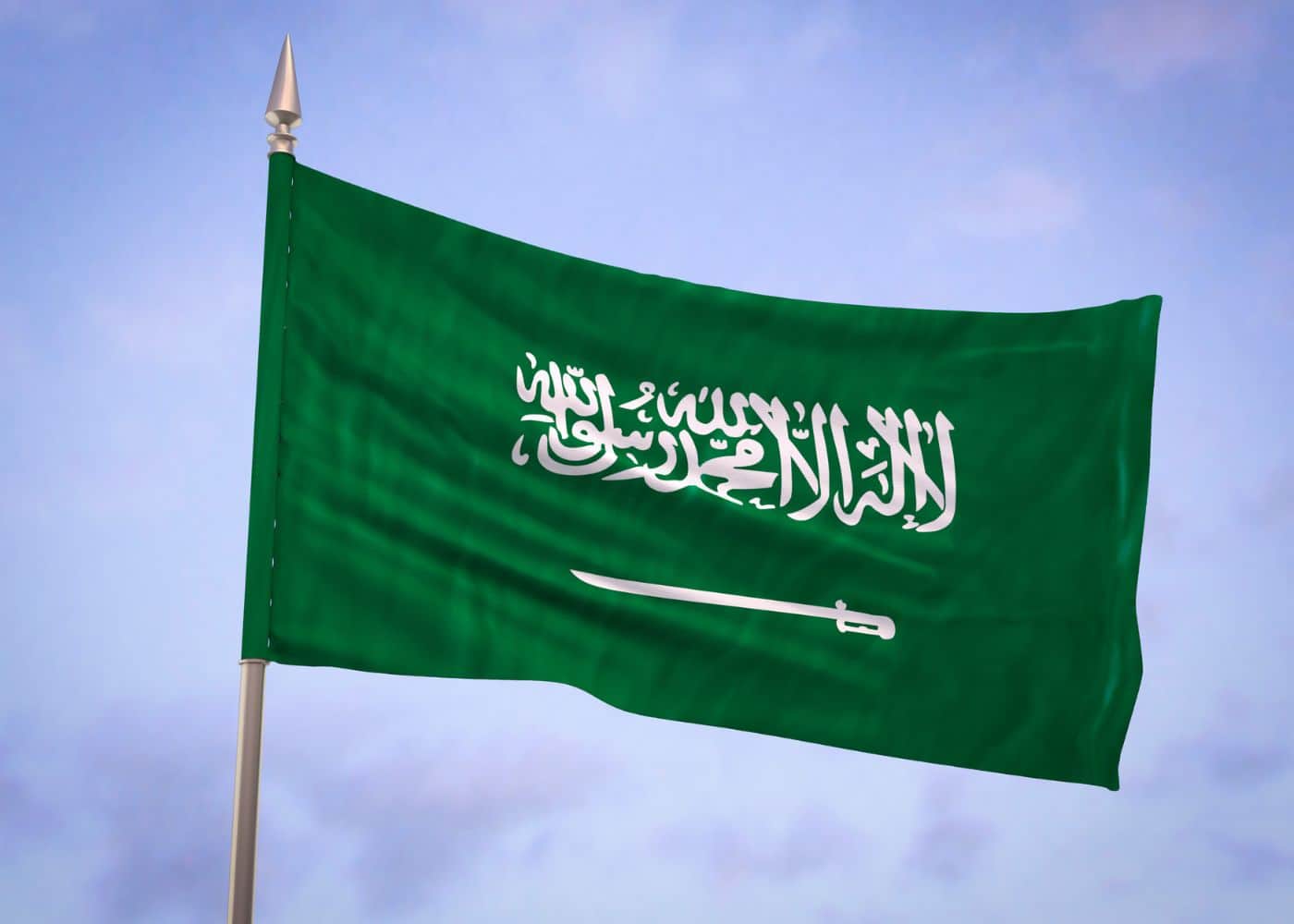
The flag stands as a powerful symbol that encapsulates the cultural significance and spirit of the nation. Its design consists of a green field with the Shahada inscribed in white text. Above the Shahada, there’s a white sword pointing upward, symbolizing justice and the adherence to Islamic principles. The green color represents Islam, paradise, and the Prophet Muhammad.
The history of the flag is intertwined with Saudi Arabia’s rich heritage and religious identity. Adopted on March 15, 1973, the flag represents the unity and adherence to Islamic principles of the Saudi Arabian people.
Beyond its aesthetics, the flag from Saudi Arabia carries deep symbolic meanings. The green color represents Islam, signifying the nation’s religious identity and association with the Prophet Muhammad. It also represents paradise, symbolizing the aspirations of the Saudi Arabian people.
The Shahada, inscribed in white, serves as a declaration of faith and emphasizes the importance of Islam in the nation’s values and principles. The white sword pointing upward symbolizes justice and the nation’s commitment to upholding Islamic teachings.
National Flag Etiquette and Protocol
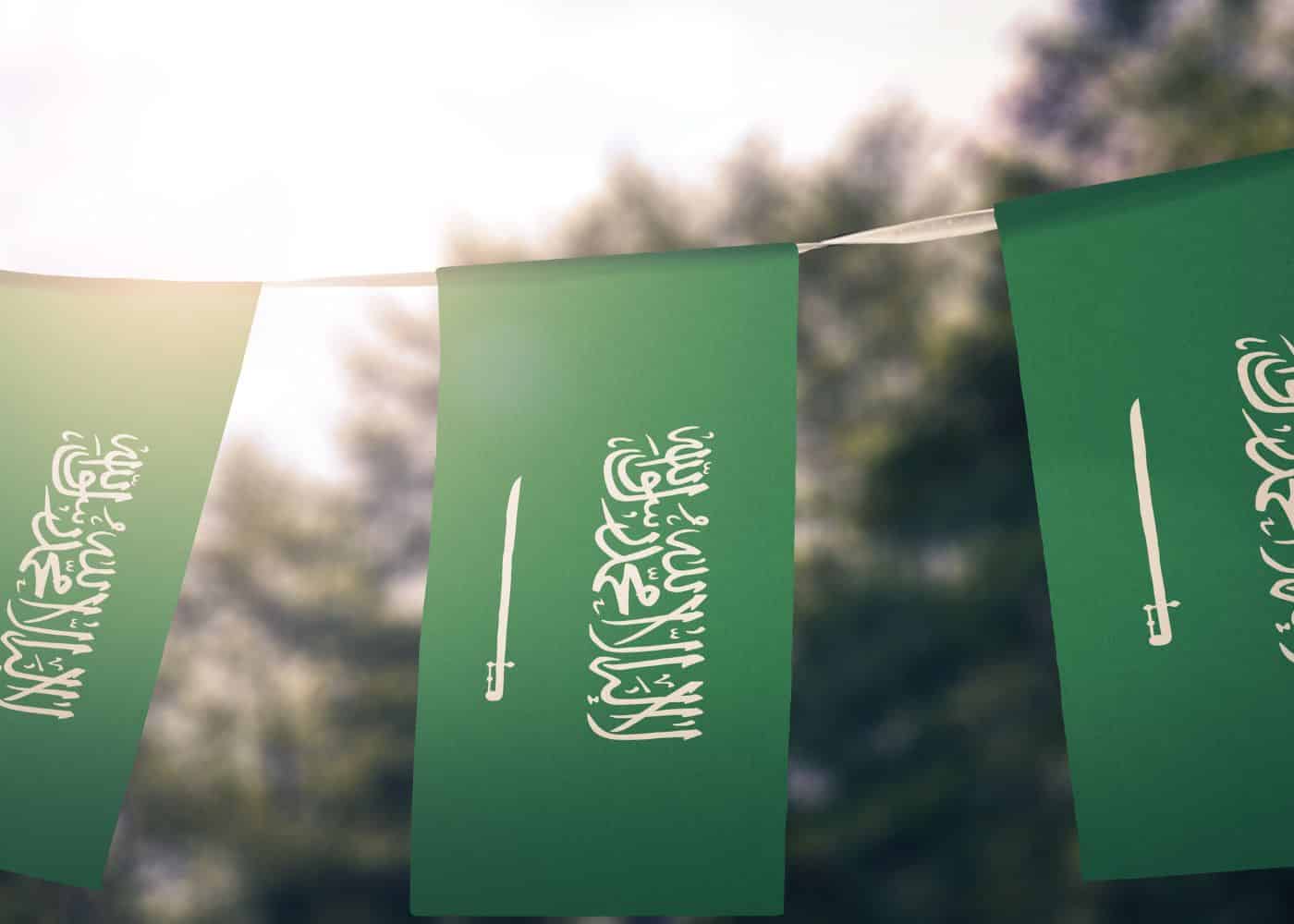
Respecting the proper usage and display of the Saudi Arabian flag is of utmost importance. Understanding flag etiquette is essential, especially during national events and ceremonies. Learn about the protocols governing the handling, hoisting, and lowering of the flag. Discover the appropriate procedures for retiring or handling damaged flags, ensuring they are accorded the respect they deserve.
- Proper Handling: The Saudi Arabian flag should be handled with care and respect, ensuring it is not allowed to touch the ground or floor. It should be held upright and not dragged.
- Hoisting and Lowering: When hoisting the flag, it should be raised briskly and lowered ceremoniously. It is customary to hoist the flag at sunrise and lower it at sunset, although this may vary depending on the occasion or specific guidelines.
- Displaying the Flag: The Saudi Arabian flag should be displayed with the green field on top. It should be flown freely and not entangled or obstructed.
- Half-Staff: Lowering the flag to half-staff is a gesture of mourning or respect. This should be done on specific days of remembrance or when directed by authorities to honor national tragedies or the passing of significant figures.
- Flag Retirement: When a Saudi Arabian flag becomes damaged, torn, or worn out, it should be retired in a dignified manner. This can involve burning it in a respectful and solemn ceremony, following appropriate guidelines and local regulations.
- Flag Size and Placement: The size of the Saudi Arabian flag displayed should be proportionate to the size of the flagpole or display area. It is recommended to consult local guidelines or authorities for specific rules regarding flag size and placement.
- Respectful Disposal: If a flag cannot be retired through burning, it should be disposed of in a respectful manner. This can involve burying it or handing it over to authorized organizations that specialize in flag disposal.
Interesting Facts and Trivia
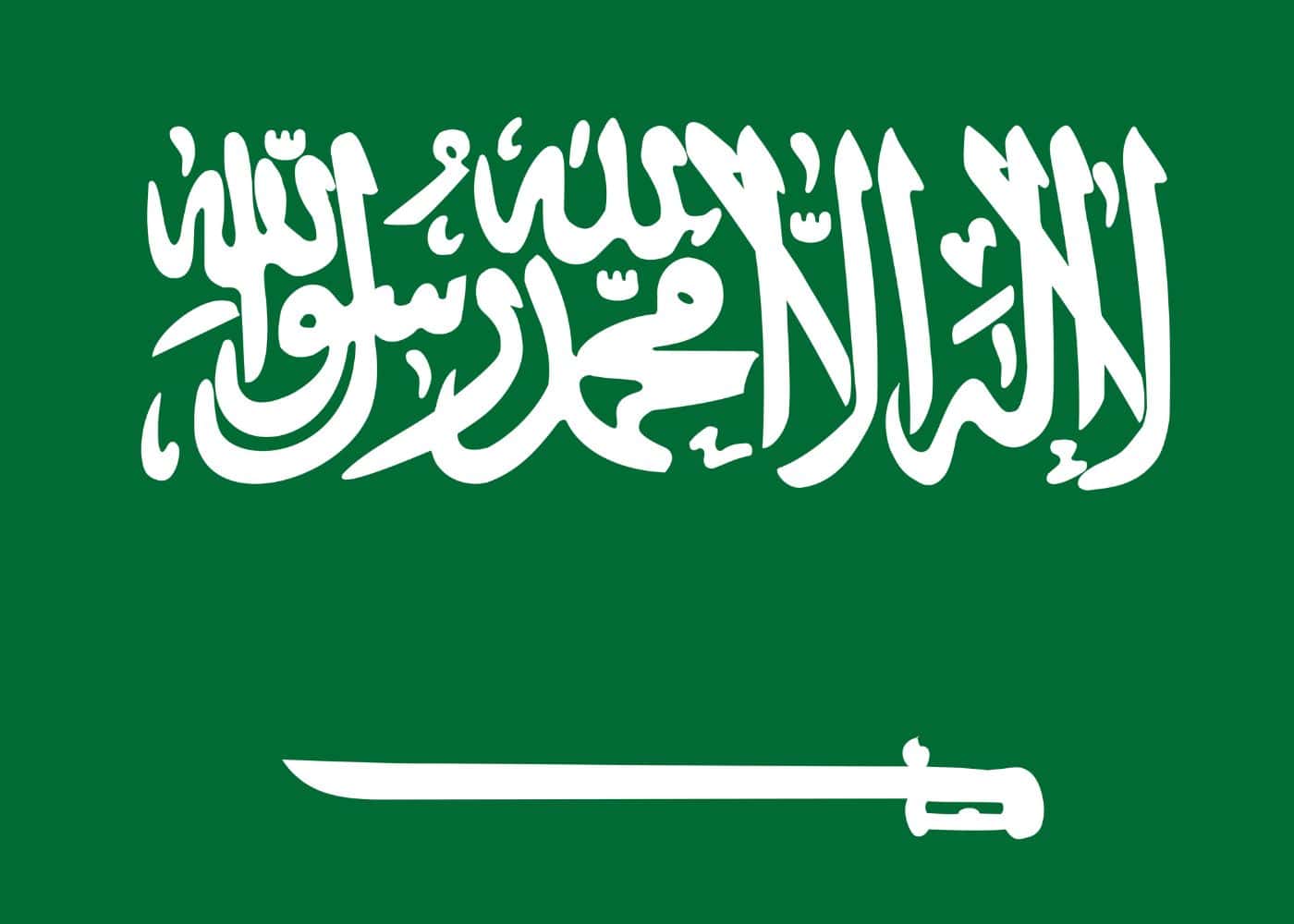
Embark on a journey of fascinating facts and lesser-known trivia about the Saudi Arabian flag picture. Discover unique features within the flag’s design that hold hidden symbolism. Uncover stories of famous incidents or events involving the flag that have left an indelible mark on the nation’s history and identity.
Rich Tapestry of History
- 1973: The current flag of Saudi Arabia is adopted on March 15, symbolizing the unity and religious adherence of the Saudi Arabian people.
- Colors and Symbolism: The green color represents Islam, paradise, and the Prophet Muhammad, while the white sword symbolizes justice and the nation’s commitment to Islamic principles.
- National Identity: The flag embodies Saudi Arabia’s rich history, cultural heritage, and the nation’s religious and cultural values.
These historical facts highlight significant moments in the history of the Saudi Arabian flag, showcasing its role in shaping Saudi Arabia’s national identity and symbolizing its religious and cultural heritage.
Flag Related Symbols and Emblems
A flag is not alone in representing the nation’s identity. Explore additional national symbols and emblems closely associated with Saudi Arabia, understanding their significance and how they relate to the flag. Delve into their historical and cultural roots, further enriching your understanding of Saudi Arabia’s heritage. The country is open for tourism, and you can easily go on a Saudi Arabia tour with many different itineraries.
Symbolisms of the Saudi Arabia Flag
The flag of Saudi Arabia holds several symbolic elements that represent the nation’s history, values, and aspirations. Here are the symbolisms of the Saudi Arabia flag presented in itemized form:
- Green Color: Represents Islam, paradise, and the Prophet Muhammad, emphasizing the religious identity of the nation.
- Shahada: Inscribed in white text, it serves as a declaration of faith, emphasizing the importance of Islam in the nation’s values and principles.
- White Sword: Pointing upward, it symbolizes justice and the commitment to upholding Islamic teachings.
- Flag’s Design: Reflects Saudi Arabia’s religious and cultural identity, emphasizing the importance of Islamic principles and justice.
- National Identity: The flag serves as a powerful symbol that unifies the Saudi Arabian people, reminding them of their shared heritage and religious identity.
- National Aspirations: Through its design and elements, the flag embodies the aspirations and values of the Saudi Arabian nation, including adherence to Islam, justice, and unity.
These symbolisms in the flag contribute to the country’s sense of identity and pride, reflecting its historical journey and religious and cultural significance.
Flags of Similar Countries or Regions
Examining the flags of neighboring countries or regions can provide intriguing insights. Compare and contrast the flags, exploring similarities in design, colors, or symbolism. Uncover historical and cultural connections between flags, shedding light on shared influences or distinctive identities.
Saudi Arabian Flag vs United Arab Emirates Flag
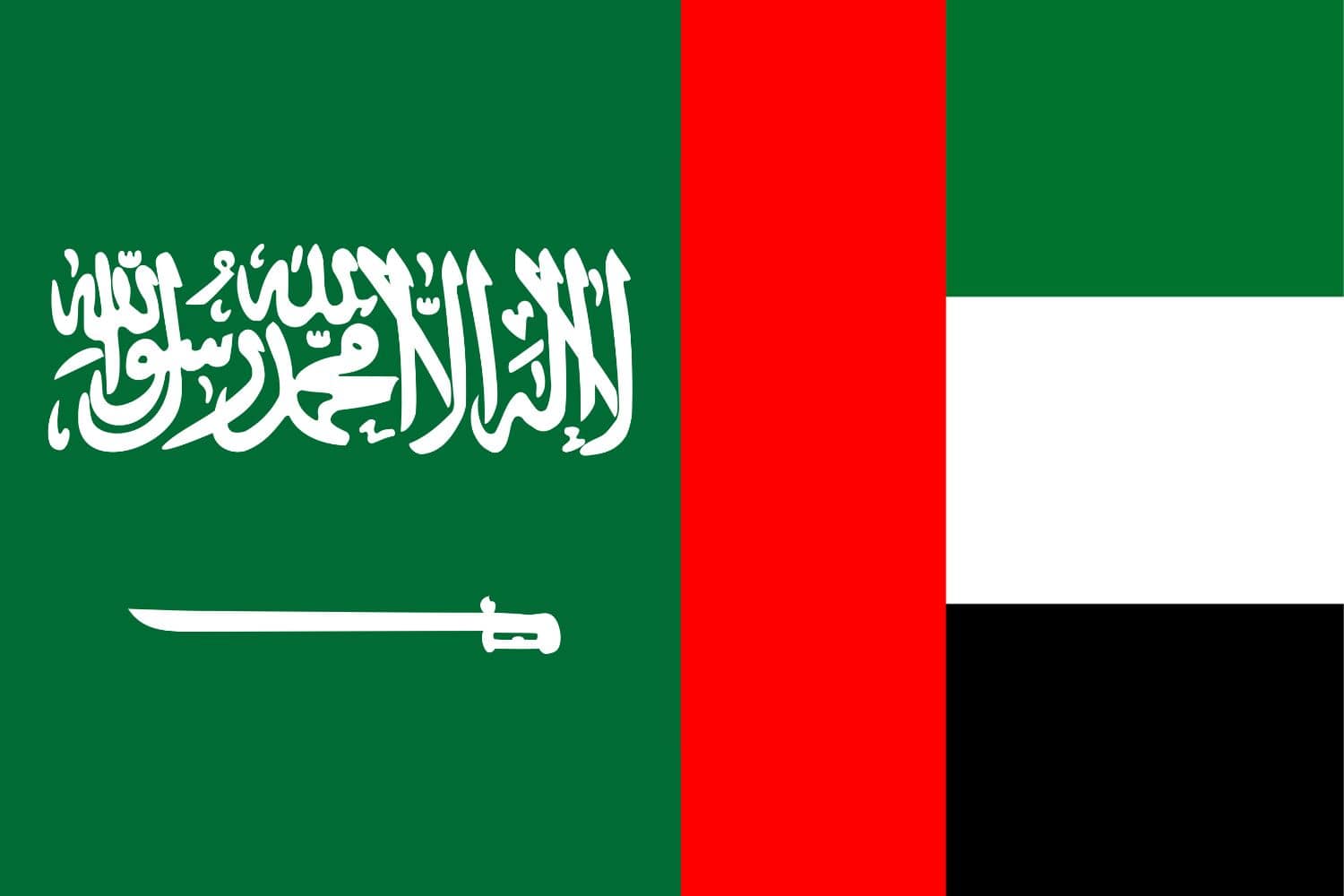
Similarity: Both flags feature a red field.
Difference: The United Arab Emirates flag includes green, black, and white horizontal bands on the hoist side.
Saudi Arabian Flag vs Kuwaiti Flag
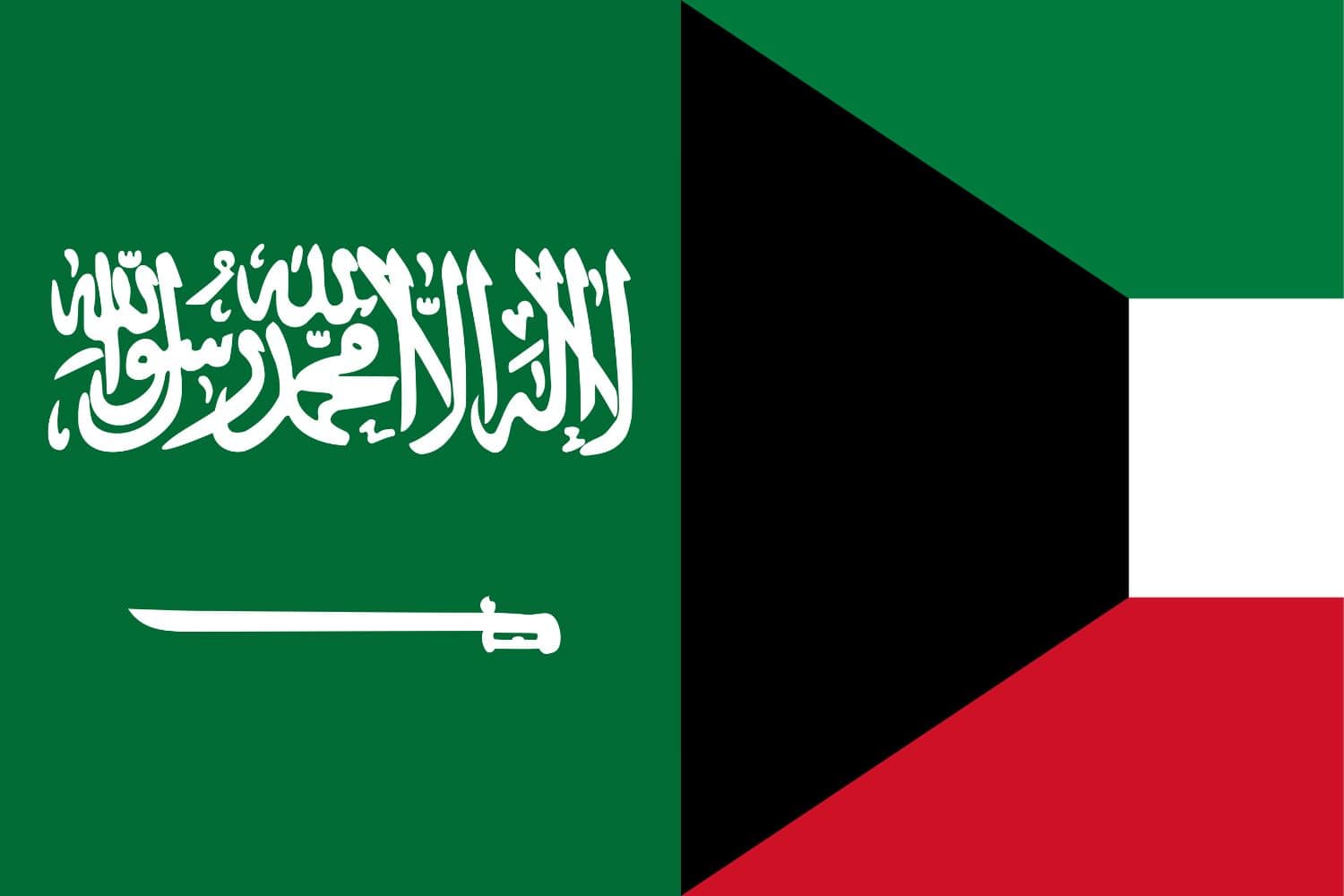
Similarity: Both flags feature a red field.
Difference: The Kuwaiti flag includes a black trapezoid on the hoist side with a white triangle within it, and it also includes green horizontal bands.
Saudi Arabian Flag vs Qatari Flag
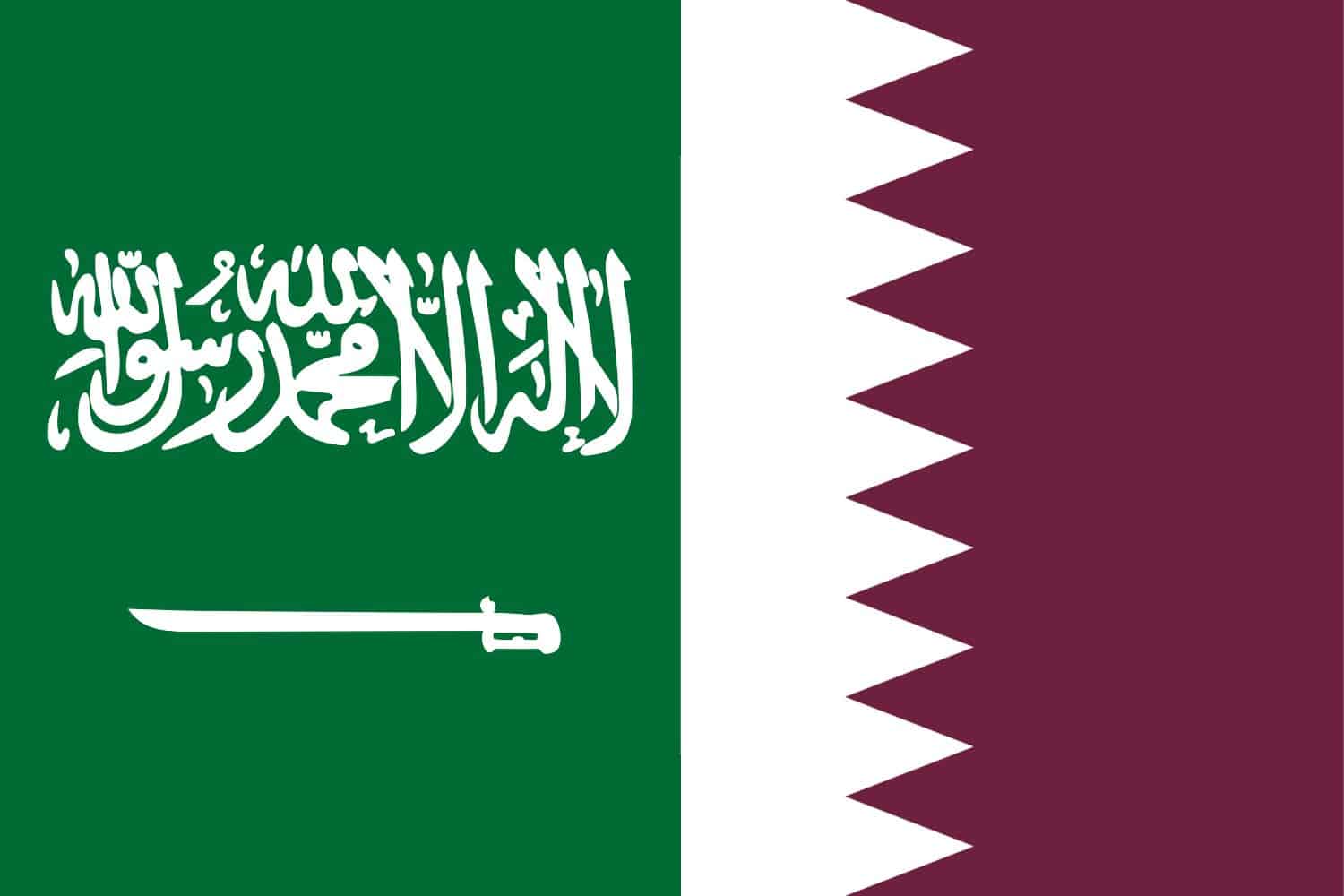
Similarity: Both flags feature a red field.
Difference: The Qatari flag includes a white serrated band on the hoist side and a maroon vertical band on the fly side.
Saudi Arabian Flag vs Egyptian Flag
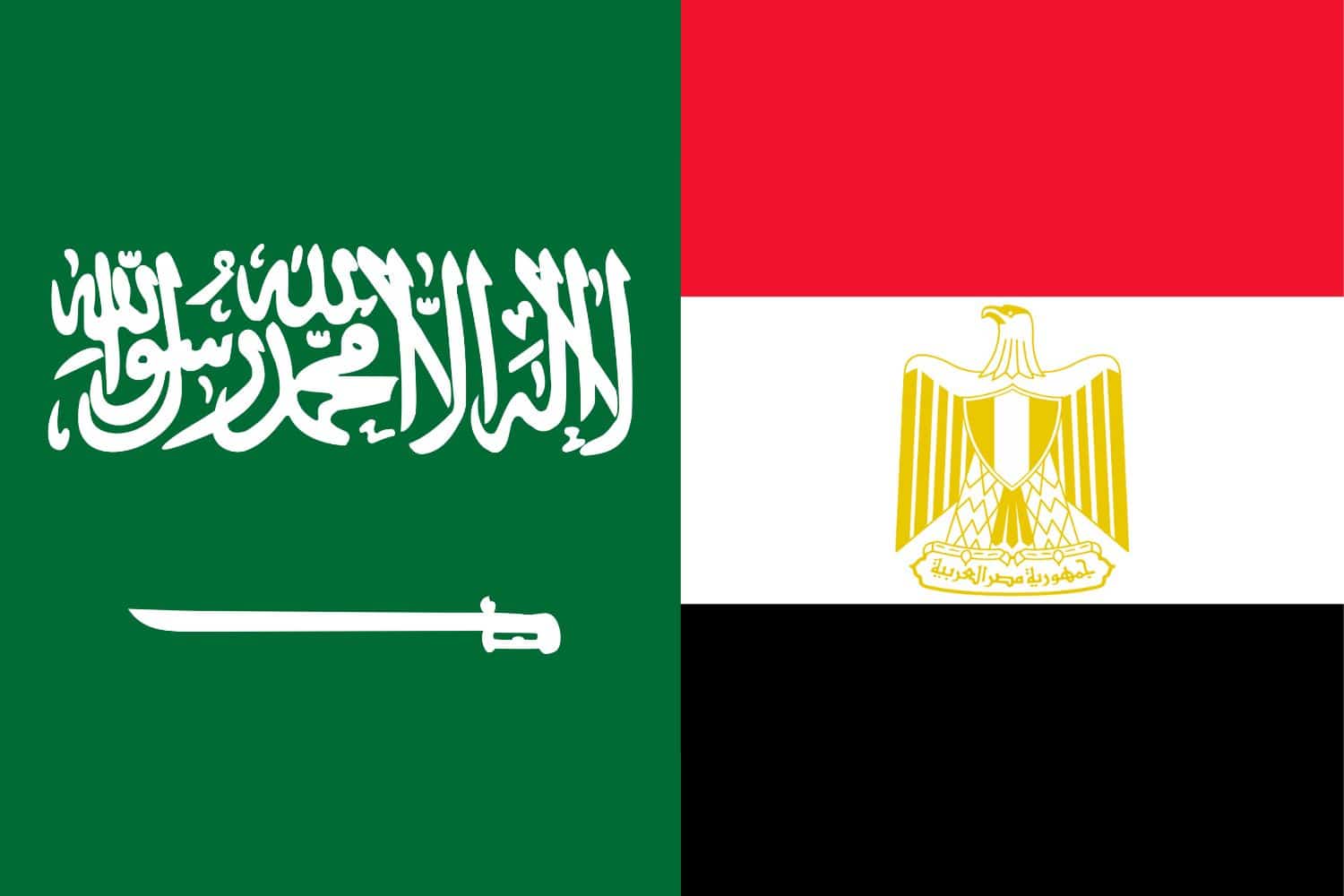
Similarity: Both flags feature a red field.
Difference: The Egyptian flag includes a white eagle on the hoist side and three horizontal bands in the colors of red, white, and black.
Saudi Arabian Flag vs Pakistani Flag
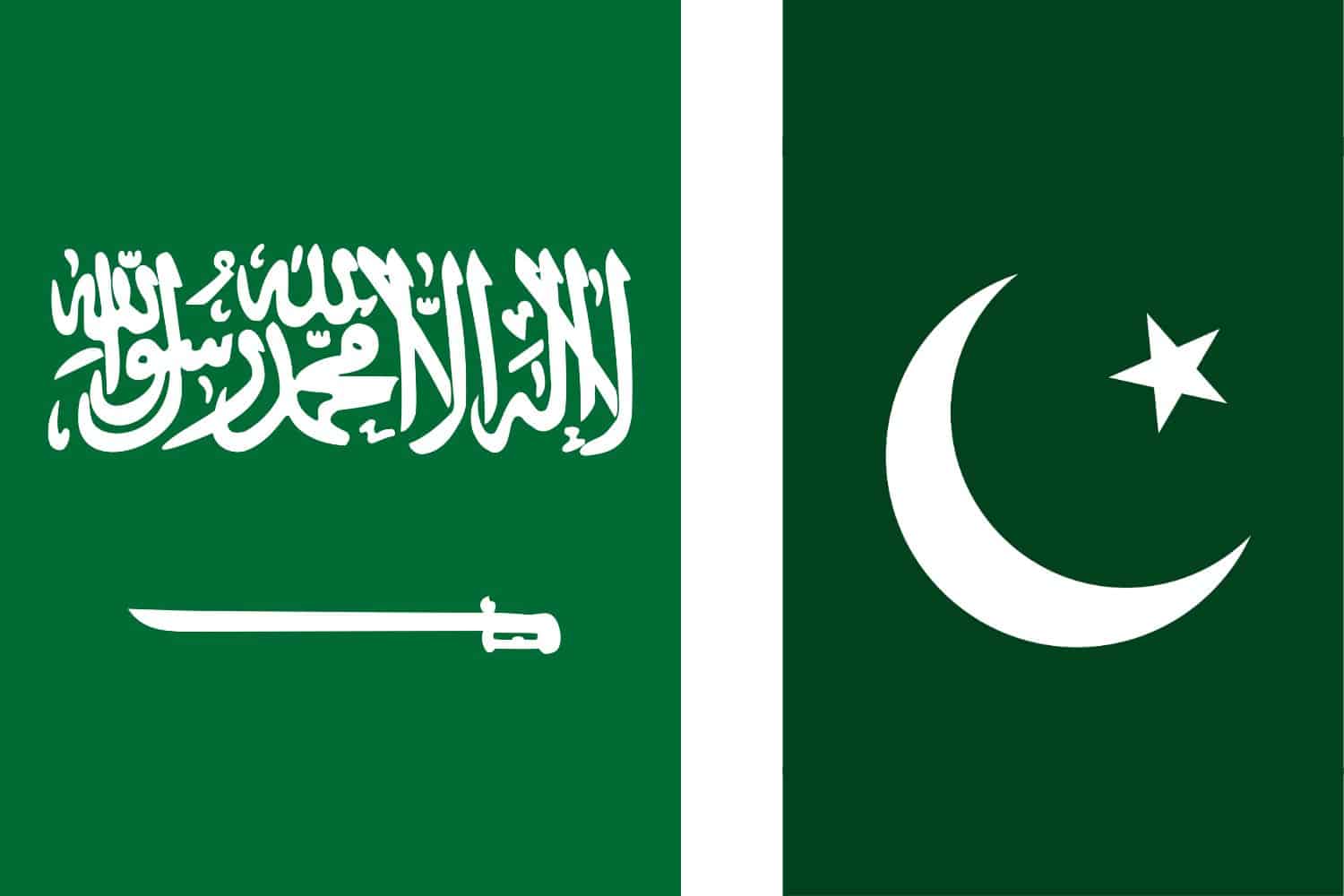
Similarity: Both flags feature a green field.
Difference: The Pakistani flag includes a white vertical stripe on the hoist side and a white crescent and star symbol.
Saudi Arabian Flag vs Turkish Flag
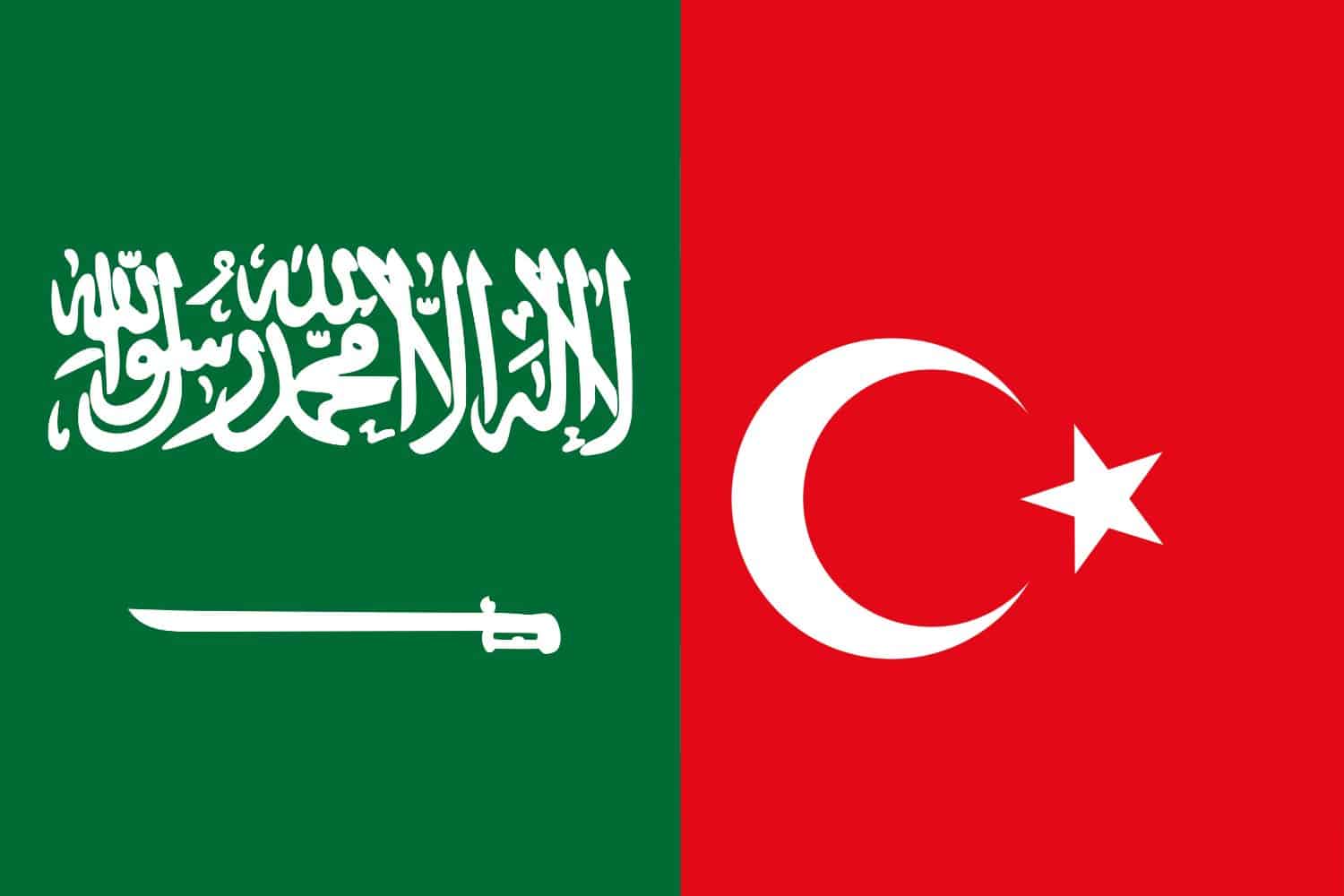
Similarity: Both flags feature a red field.
Difference: The Turkish flag includes a white star and crescent on the hoist side.
Saudi Arabian Flag vs Iranian Flag
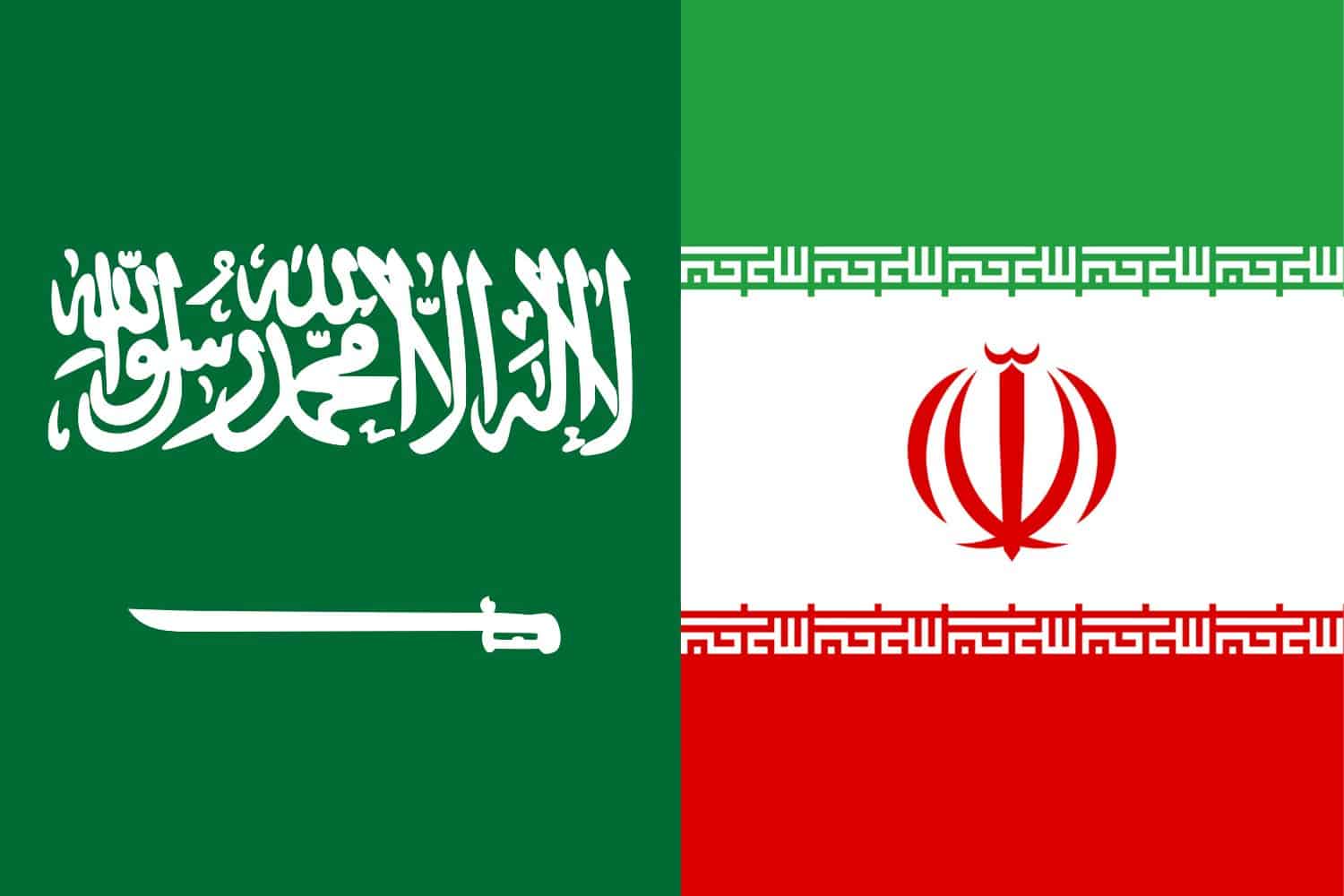
Similarity: Both flags feature a green field.
Difference: The Iranian flag includes a red stripe on the hoist side with the emblem of Allah in white and the inscription of Allahu Akbar in Arabic script.
Saudi Arabian Flag vs Jordanian Flag

Similarity: Both flags feature a red field.
Difference: The Jordanian flag includes a white seven-pointed star in the hoist-side triangle and a broad black stripe on the fly side.
Saudi Arabian Flag vs Palestinian Flag

Similarity: Both flags feature a red field.
Difference: The Palestinian flag includes a black, white, and green tricolor with a red triangle on the hoist side containing a white seven-pointed star.
Frequently Asked Questions (FAQs)
Discover answers to common questions related to the Saudi Arabia flag picture. From its historical origins to the symbolism behind its elements, find concise and informative responses that address inquiries commonly posed by those curious about Saudi Arabia’s flag.
What do the colors on the Saudi Arabia flag represent?
The green color symbolizes hope, and the white color represents purity and peace.
What does the Shahada on the Saudi Arabia flag symbolize?
The Shahada represents the Islamic creed, declaring the oneness of God (Allah) and the prophethood of Muhammad.
What is the significance of the crossed swords on the Saudi Arabia flag?
The crossed swords represent the House of Saud, the ruling royal family of Saudi Arabia, and symbolize the country’s strength and defense.
Why is the color green absent on the Saudi Arabia flag compared to other Muslim countries’ flags?
The persistence of green emphasizes the simplicity and purity of the flag’s design while still reflecting the country’s Islamic identity.
Are there specific guidelines for handling and displaying the Saudi Arabia flag?
Yes, the Saudi Arabia flag should be treated with respect, not allowed to touch the ground, and hoisted and lowered ceremoniously during national events.
When was the current design of the Saudi Arabia flag adopted?
The current design of the Saudi Arabia flag was adopted in 1973.
How does the Saudi Arabia flag reflect the country’s Islamic identity?
The inclusion of the Shahada and the sword on the flag highlights the country’s Islamic heritage and its connection to the birthplace of Islam.
Has the design of the Saudi Arabia flag changed throughout history?
While there have been variations and modifications, the current design has remained consistent since its adoption in 1973.
What role does the Saudi Arabia flag play in national events and celebrations?
The Saudi Arabia flag is prominently displayed during national holidays, official ceremonies, and sporting events to symbolize unity, pride, and patriotism.
What does the Saudi Arabia flag mean to the Saudi people?
The flag holds great importance for the Saudi people, representing their values, heritage, and national identity, fostering a sense of unity and patriotism.
More About Saudi Arabia
[the-post-grid id=”50418″ title=”Saudi Arabia Main page”]
